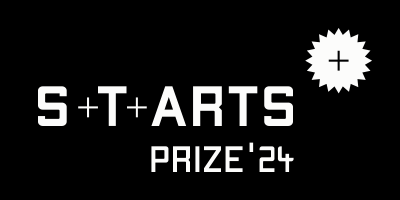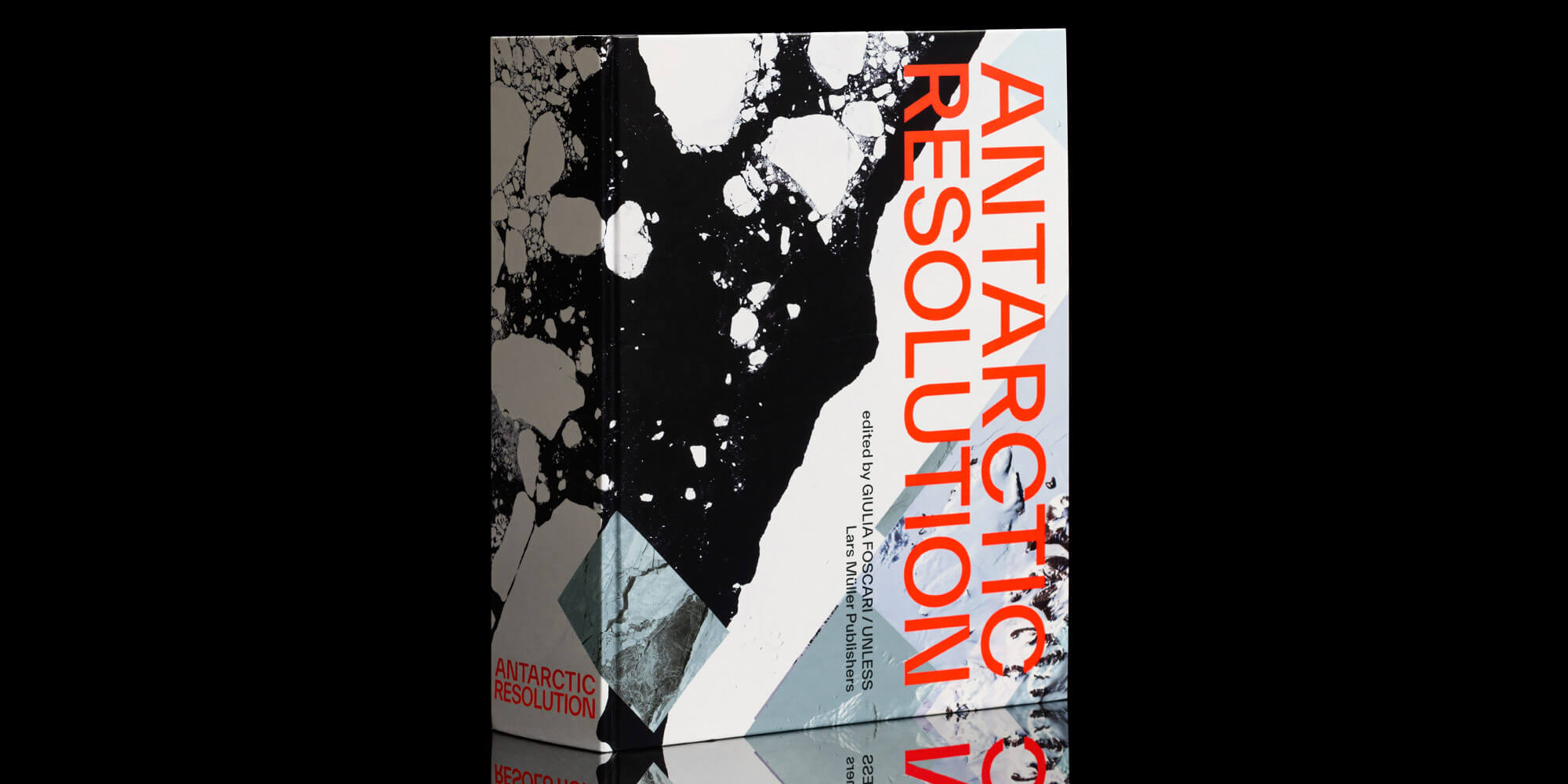Grand Prize – Innovative Collaboration: Awarded for innovative collaboration between industry or technology and the arts that opens new pathways for innovation.
What happens in Antarctica does not stay in Antarctica.
Accounting for 10% of the landmass, 70% of the freshwater, and 90% of the ice of Planet Earth, Antarctica is the largest repository of scientific data on our climate history—essential to inform crucial environmental policies—and the greatest menace to global coastal settlements threatened by the rise in sea levels induced by anthropogenic global warming.

The threat that Antarctic ice thinning poses to our own lives and those of future generations is real. The kilometers-thick ice sheet is currently melting at the alarming pace of 200 Olympian swimming pools per minute, and the total meltdown of Antarctic ice would increase global sea levels by 60 meters, launching the largest migration ever witnessed by humanity.
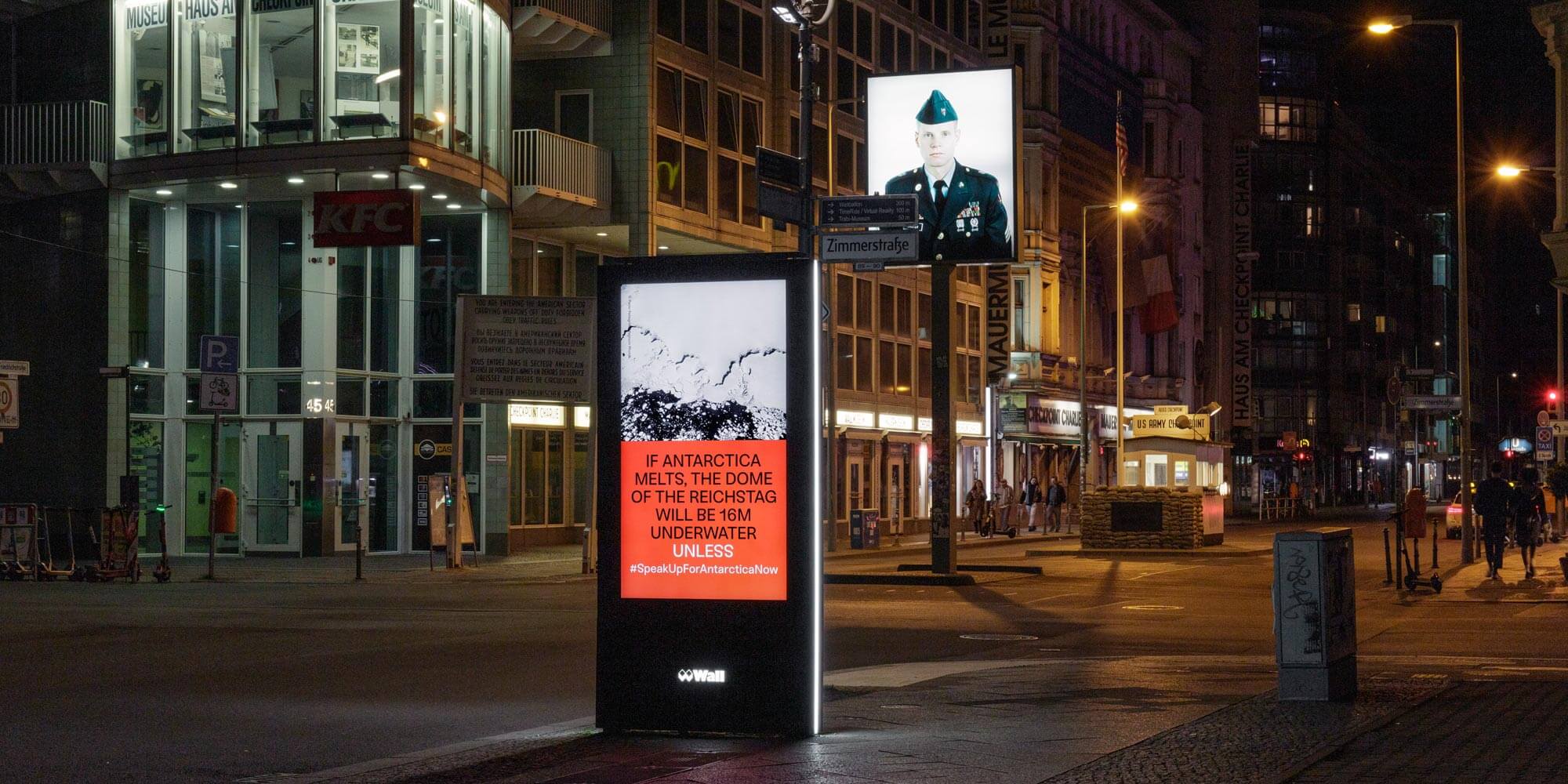
While the future of our planet depends, to a great extent, on the fate of the Antarctic, our seventh continent is collectively neglected. Mostly thought of as our last wilderness, a far-away pristine landscape, Antarctica is a contested territory that conceals also resources that might prove irresistible in a world with an ever-increasing population and potential resource shortages triggered by geopolitical unrest.
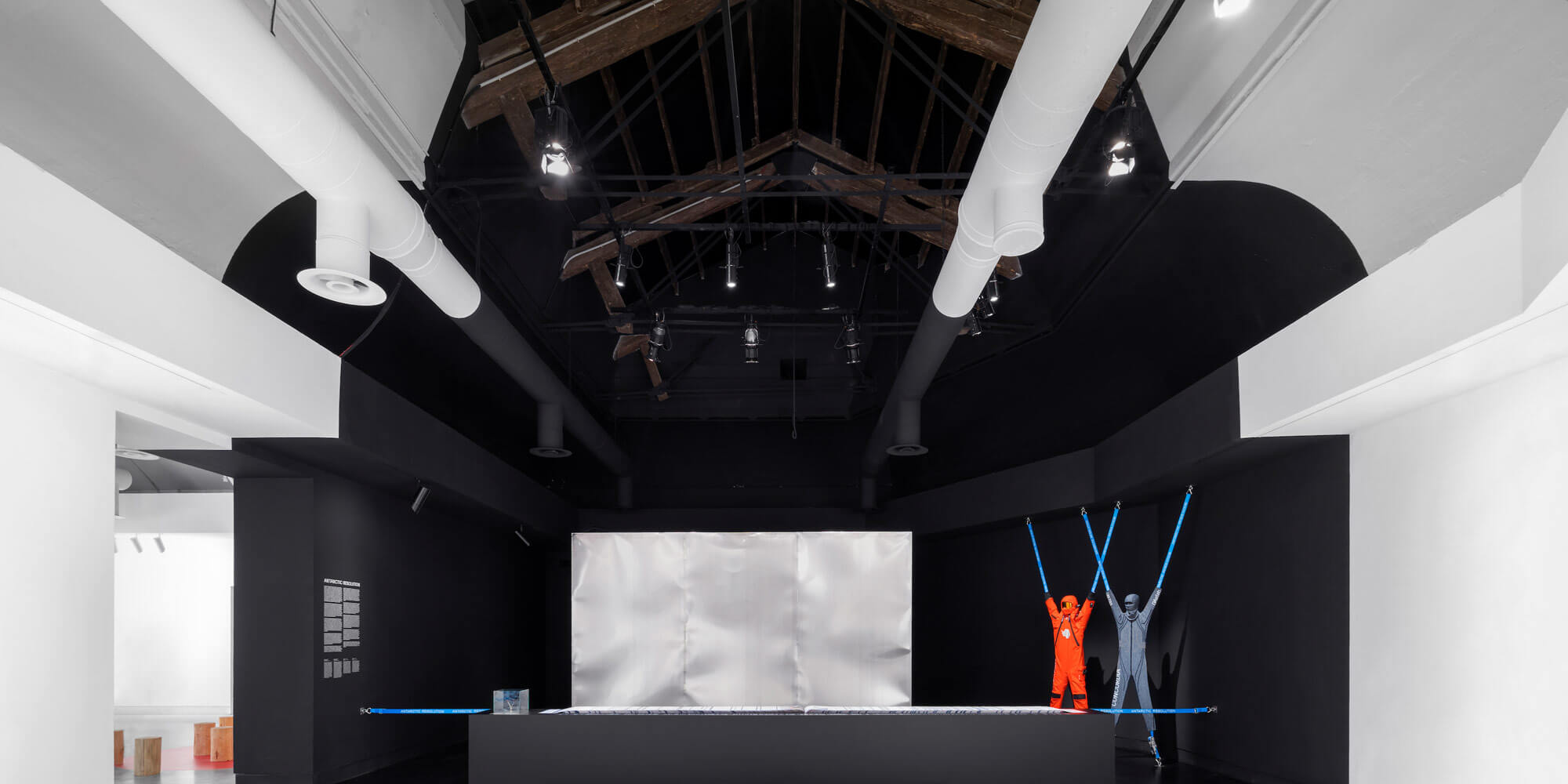
Antarctic Resolution was conceived by Giulia Foscari / UNLESS to catalyse global attention to one of our few Global Commons and create a constituency for our only continent without an indigenous population, with the ambition of contributing to the protection of the Antarctic, and in turn, of our own species.
Developed as a transnational and multidisciplinary collective effort, Antarctic Resolution was launched on occasion of the bicentenary of the first recorded human landing on the continent in the format of a 1000-page volume published by Lars Müller Publishers and authored by the 150 leading world Antarctic experts. The encyclopedic publication focuses on the continent’s unparalleled scientific potential, contemporary geopolitical significance, and extreme inhabitation model. Alongside rigorous academic research, the volume presents an unprecedented visual portfolio including photographic essays, data-driven infographics, cartographies, and architectural drawings. Building upon the power of the arts to catalyze global action and accelerate the process of data democratization, the research was presented in homonymous site-specific exhibitions within the Central Pavilion of the 17th International Architecture Biennale (Venice, Italy) and at the Museo Nacional Thyssen-Bornemisza on the occasion of the 30th anniversary of the Protocol on Environmental Protection to the Antarctic Treaty (Madrid, Spain).

In Venice—a city that could be itself intended as a barometer of climate change—the publication, “exploded” for the occasion, was exhibited alongside the snow goggles worn by Captain Scott while man-hauling across the Antarctic and the pioneering Antarctica Suit, conceived with D-Air Lab as a portable environment for extreme Antarctic conditions. The collective call for action was amplified in the exhibition by the alarming soundscape produced by the work of Arcangelo Sassolino, a performative art installation informed by scientific data provided by glaciologist David Vaughan, that powerfully denounces the accelerated thinning of the cryosphere.
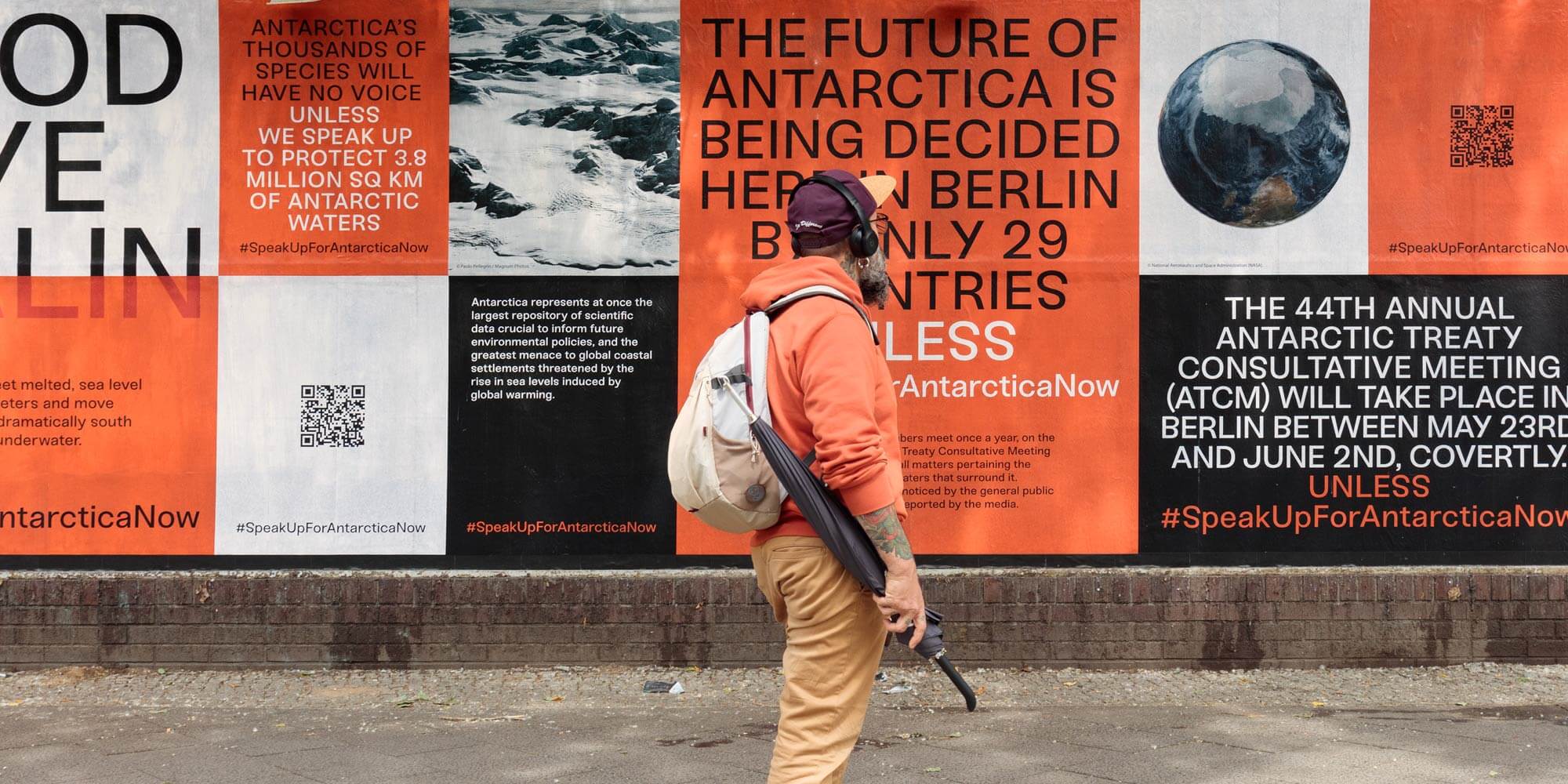
True to the twofold ambition implicit in its title to construct a high-resolution image of the continent and advocate for Antarctic resolutions, on occasion of the 44th Antarctic Treaty Consultative Meeting (ATCM) held in Berlin, the project evolved beyond the walls of cultural institutions, taking over the German capital with a campaign “Speak Up for Antarctica Now.” The latter called upon Berliners and passers-by to demand accountability for the future of a continent that is 1.4 times the size of Europe from the ATCM delegates of the 29 decision-making nations that have the right to vote on all matters pertaining Antarctic governance, and invited them to embrace their role as Antarctic citizens and Speak Up for Antarctica Now to defend intergenerational justice.
Credits
Giulia Foscari & UNLESS
https://una-unless.org/
Antarctic Resolution. Publication
Editor: Giulia Foscari / UNLESS
Authors: 150 interdisciplinary specialists (full list in project URL)
Data/Images: 82 organizations & archives, 27 artists (full list in project URL)
Cartography/Infographics: UNLESS, The Polar Lab, Pomo
Architectural Drawings: UNLESS, The Polar Lab
Publisher: Lars Müller Publishers
Antarctic Resolution. Exhibition in Venice, Italy
Exhibitor: Giulia Foscari / UNLESS
Featured: Arcangelo Sassolino; David Vaughan; D-Air Lab
Collaborators: Lars Müller Publishers, Scott Polar Research Institute
#SpeakUpForAntarcticaNow. Campaign in Berlin, Germany
Concept: UNLESS with Carlo Barbante, Alan D. Hemmings, James N. Barnes
Graphic design: Studio Vedet and HaugHaug.
Photographers: Shaun O’Boyle, Sebastian Copeland, Andrea Izzotti, Spencer Lowell, James Morris, Paolo Pellegrin, Emil Shulthess, John Weller, Norbert Wu
With support from: D-Air Lab; Fondazione Giuseppe e Pericle Lavazza; Furthermore: a program of the J. M. Kaplan Fund; Graham Foundation for Advanced Studies in the Fine Arts; Thyssen Bornemisza Art Contemporary TBA21; Ursula Stein.
Biography
Giulia Foscari W. R. (IT) is an architect, researcher, and activist who has been practicing in Europe, Asia, and the Americas. She is the founder UNLESS, a non-profit agency for change, and of its alter ego UNA, an architecture studio focused on cultural projects. Giulia taught at Hong Kong University and at the Architectural Association. The work of UNA and UNLESS was exhibited extensively internationally. Giulia authored Elements of Venice and edited Antarctic Resolution (Lars Müller Publishers). She is a member of the International Council of the MoMA, a Board Member of the Fondazione Musei Civici di Venezia and of the Antarctic Southern Ocean Coalition.
UNLESS is an agency for change. It is a non-profit organization devoted to transnational research on extreme environments threatened by the planetary crisis. Founded by architect Giulia Foscari in 2019, the agency collaborates closely with a vast network of multidisciplinary specialists based on all seven continents. UNLESS operates alongside its alter ego, the architecture studio UNA.
Jury Statement
Although the images from Antarctica have become somehow iconic for the looming planetary change, besides a few experts, most of us don‘t have any understanding of the very fragile ecosystem of Antarctica and its importance to the whole planet. How can we not just see the symptoms but understand the causations and consequences? This is the major challenge that the fascinating project Antarctic Resolution, initiated, curated and enabled by Giulia Foscari / UNLESS, is set to take on, and with this in mind it is no longer surprising that it is probably the largest and most diverse collaboration ever to win this award for innovative collaborations. Giulia Foscari herself is an excellent example for multi- and cross-disciplinary expertise: architect researcher, activist, founder, educator, working in and at the hotspots of globalization and collaborating with local communities as well as with many big shots in architecture and urban planning, she built not only a comprehensive knowledge and overview of the ongoing climate change but also wove an immense network of experts and gained broad reputation with her presentations in many high profile art exhibitions and events. One of the many characteristics and features often attributed to art is its ability to make the obvious also seeable, the understandable also comprehensible and this is one of the high qualities of Antarctic Resolution. It opens up new perspectives and insights by leveraging the means and powers of art as a research practice as well as a way to enable awareness and concern, participation and involvement. It is not only a remarkable evidence of the growing number of art projects that go beyond addressing the topic of climate change but engage in the activism that is necessary to tackle it. Antarctic Resolution is also an amazing collaborative achievement with over 150 experts collaboration and contributing. And last but not least it is an exciting, almost breathtaking art installation.
